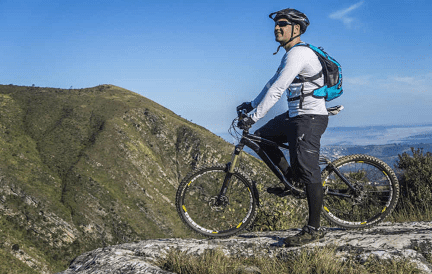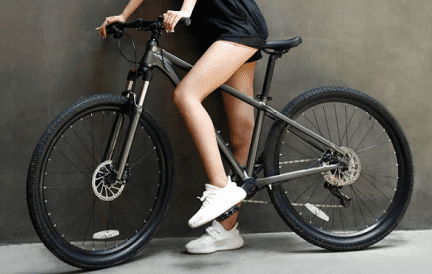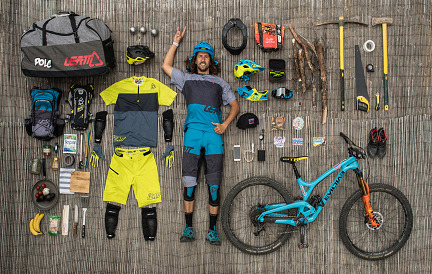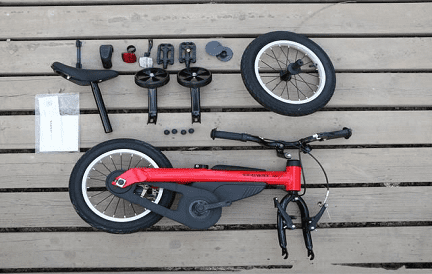The mountain bike is an absolute necessity for every biker. What’s more, its gears also bring a lot of conveniences. These mountain bike gear enable mountain biking as no other equipment can. However, nothing good will be achieved if the gear isn’t chosen correctly and the gears don’t work properly.
- Part 1: Types of Mountain Bike Gear
- Part 2: Importance of MTB Gears
- Part 3: 5 Must-Have MTB Gears
- Part 4: A Roundup of the Top MTB Gear out There Today
- Part 5: The Best Protective Gear for Mountain Biking
- Part 6: What To Look for in Best MTB Gear
- Part 7: Why Should I Use the Best MTB Protective Gear
- Part 8: 5 Things You Should Never Wear While Mountain Biking
- Part 9: Conclusion
Part 1: Types of Mountain Bike Gear
As mountain biking has evolved into what it is today, several innovations have been introduced, and regulations implemented so that today’s mountain bikes are safe and user-friendly. This article briefly examines this learning area, specifically how mountain bike gear patterns have evolved and how standard regulations play a role in determining the specific characteristics of a bicycle set-up. There are three distinct sorts of off-road bicycle gears single, double, and triple chainring. Before you even start looking for your new bike, you need to decide which type of gear you want.
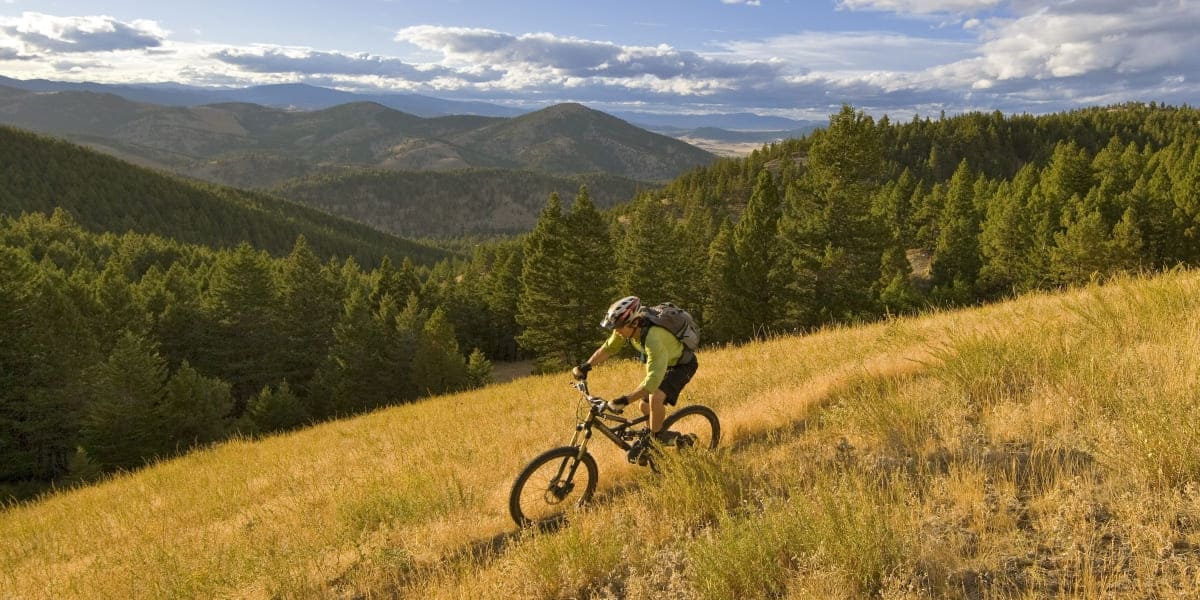
Single Chainring
These bikes have just a single chainring on the front that normally has a large tooth up to 40T and is paired with a wide-range cassette on the back, giving a similar gear ratio spread as those equipped with double or triple chainrings. Single chainrings also have a narrow Q-factor (distance between pedal attachment points). They typically use an integrated chainset with an outboard bottom bracket (rather than threaded).
Single ring bikes are becoming more popular as they’re simpler to operate and maintain. They also make great lightweight options if you’re planning on racing or riding in the mountains on long climbs where having some extra gears will come in handy. A downside for some riders is that you’re restricted by the number of available cogs on your cassette, so you can be limited in terms of top speed when compared to other gearing options.
Double Chainring
Then again, assuming that you’re after a more efficient pedaling, lower weight, and less maintenance, then a double or triple chainset is ideal. A double chainset provides two different-sized chainrings to choose from. The big one is for cruising along flatter roads and the smaller for climbing hills.
Triple Chainsets
Triple chainsets usually have three chainrings of different sizes and a longer rear cassette with more gears. A triple chainset is ideal for riders who need a wider range of gears to cope with hilly terrain.
Part 2: The Importance of MTB Gears
Mountain bike gear is important. They allow you to climb hills. They let you accelerate out of corners and over obstacles. They let you keep up with your mates. The gears on your mountain bike are there to make it easier to pedal so that you don’t have to spin your legs at 100mph to keep up with the rest of the group.
The basic principle behind gearing is that pedaling around the same circle in a big gear is harder than pedaling around a bigger circle in a smaller gear.
This means that your bike has two sets of gears, one on the front and one on the back. The ones on the front are called chainrings, and they’re located on the cranks next to the pedals. The ones on the back are called cogs, located on the rear hub.
Changing which chainring or cog you use changes how easy or hard pedals are, whereas changing which combination of chainring and cog you use changes how fast or slow you go for each turn of the pedals.
Part 3: 5 Must-Have MTB Gears
Regardless of your ability level, there’s a certain something that can make or break a day on the trails: gear. Your bike is important, but there’s a lot of gear that can help you feel more comfortable and confident no matter the challenges are thrown at you by the trail.
We asked some professional mountain bikers what gear they won’t hit the trail.
Here are their picks for must-have mountain bike gear:
- Bike Shorts with Padding
- Hydration Pack
- Spare Tubes
- Multi-Tool
- Helmet
Part 4: A Roundup of the Top MTB Gear Out There Today
In recent years, the bike industry has made huge leaps in product design, and we’re stoked for these advancements. The result is a healthy mix of new products that have us drooling over our keyboards. After cautious thought, here is the absolute best trailblazing bicycle gear from the current year’s Outdoor Retailer Summer Market that we feel will affect the local cycling area.
RockShox Reverb Stealth Dropper Seatpost
The new RockShox Reverb Stealth Seatpost has been redesigned to be one of the best dropper posts today. It features a remote with superior ergonomics, improved reliability, and an improved return speed.
POC Tectal Race Helmet
POC has taken their already great Tectal helmet and gotten it down to 250 grams while keeping all of the safety features that make it one of the best helmets. The new helmet is also more ventilated and has an adjustable visor.
Giro Terraduro Mountain Bike Shoes
Giro introduced its first mountain bike shoe with a Vibram sole and an EVA midsole for extra comfort and performance above anything else out there. The lace-up system adds style and keeps you tight in the shoe for going downhill or riding technical singletrack and when you’re going back to town.
Part 5: The Best Protective Gear for Mountain Biking
Best MTB protective gear for mountain biking is as follows
Helmets
Wear a helmet that complies with the National Bicycle Helmet Safety Institute.
Ensure that the helmet meets your country’s minimum required standards (APB number, fitting, etc.).
Body armor/Arctic riding gloves
Arctic riding gloves are recommended for the outermost portion of your body (clothing) because they provide additional warmth and protection.
Tight-fitting gloves allow maximum mobility and grip while riding.
Chainguard/Shoe guards
Chain guards are the little things that can make a lot of difference. They are made from a non-slip material, provide extra protection and help keep dirt and mud off your chain.
Helmet pin and tail
Install a helmet pin on your helmet and secure the tail of your helmet to the bottom of your shoe.
Proper riding technique
Use single-track trails with minimum run-off areas and no off-camber or straight sections.
There are no ruts, bumps, or obstacles in these areas to cause a rollover.
Use the body position you learned in back-country skiing and snowboarding and ski or ride over the terrain.
Hand and arm protection
In these tight and technical areas, your fingers must be properly protected. Many mountain bikers use arm guards that fit like a jacket pocket.
Non-slip riding shoes/Shoes
Avoid sandals or sneakers. Instead, choose boots that provide both comfort and support.
And also, check that your shoes don’t get dirty, wet, or damaged because they are worn out and out of shape.
Padded handlebar
While doing berm jumps or jump-starts, your handlebar pads mustn’t tear or wear away.
Fabrics
Depending on the type of surface you ride on, it is suggested that you use different kinds of fabric for different types of bike riding.
Comfortable jerseys that provide insulation and waterproof protection are recommended. These fabrics are used for winter biking and even on highland skis.
Wear a jersey with no technical lines that can irritate the skin and allow sweaty and stinky areas to remain visible. Wear a high-visibility jacket that is bright and reflective.
Outerwear
This is the most important clothing you should wear.
Wear long-sleeved shirts or undershirts to keep you warm when the weather is cool and damp.
Some people feel more comfortable riding in the chilly weather with full-length zip-off pants.
Hooded gloves are common riding apparel that may provide wind protection. Ventilation is vital when riding in cold weather. To avoid overheating, it is important to put your hands in your jacket pockets.
Alpine biking footwear usually features reflective strips on the toe area.
Also, look for thermal gloves, mittens, or winter cycling caps that may provide some additional warmth.
Winter biker
This garment is designed to be worn while cycling during the winter months in cold climates.
Avoid cycling in full-length ski pants since their bottom can get extremely wet and muddy when you are riding on wet and snowy trails. This garment is also designed to be worn in extreme cold and high altitudes. The material of this garment provides extra protection from the elements.
Rainwear
Different brands and styles of rainwear are available to match the type of riding. They range from dry wicking and waterproof to warm and windproof.
Part 6: What To Look for in Best MTB Gear
When shopping for the best mountain bike protective gear, you need to look for the best protective gear for mountain biking that will protect head to toe. The main piece of defensive stuff for mountain biking is a Helmet. Caps can shield your head from injury if there should arise an occurrence of a fall. Ensure that the cap fits cozily on your head and doesn’t move when you shake your head from one side to another.
Another important piece of equipment is the goggles or glasses you wear while riding. Goggles or glasses can protect your eyes from debris and branches, which protects your vision and enhances your ability to see clearly while riding through the woods.
A pair of durable padded gloves can protect your hands if you fall off your bike and provide a more comfortable grip on your handlebars. A pair of durable pants will protect your legs and provide a better fit while riding.
Part 7: Why Should I Use the Best MTB Protective Gear
Safeguarding your body from the impact of a mountain biking crash is essential. That’s why it’s important to use the best mountain bike protective gear.
The risk of injury is high when mountain biking. While you don’t have to spend a fortune to buy the best mountain bike protective gear, you must make sure that you’re wearing all of it whenever you ride – even on short rides. We’ve taken a look at the best protective gear for MTB based on real customer reviews and ratings, so you can trust that they’re tired and tested before being recommended here.
Part 8: 5 Things You Should Never Wear While Mountain Biking
Mountain biking is a sport for the brave, the committed, and the confident. And let’s face it, it’s an expensive sport, and if you’re going to invest in a bike, you should be able to ride it in any condition.
While mountain biking is a brilliant hobby, it’s not without its dangers. From dangerous leaps to fast descents and sharp corners, there are many hazards you’ll have to avoid. That is why it’s vital to ensure that you’re wearing suitable clothing while riding. The following are five things you ought to never wear while mountain biking:
- Denim
- Baggy Clothes
- Big Jewelry
- Flip Flops Or Sandals
- Sunglasses
Part 9: Conclusion
Mountain biking is a fun activity that people of all ages can enjoy. Mountain bike gear may cost you some money. Still, it is necessary to protect yourself from injuries and avoid any mishap when out on a ride. Here are some useful tips to keep in mind when you go shopping for your riding gear, don’t forget to go through them before you hit the trail. Remember, practice makes perfect.
And also, you should wear protective gear and helmets during your mountain biking. Suppose you are using protective eyewear and helmets. In that case, it will ensure you watch things ahead and avoid getting bumps or injuries. For this purpose, we listed the top 5 things that one must avoid to use when one is engaged in mountain bike rides.


